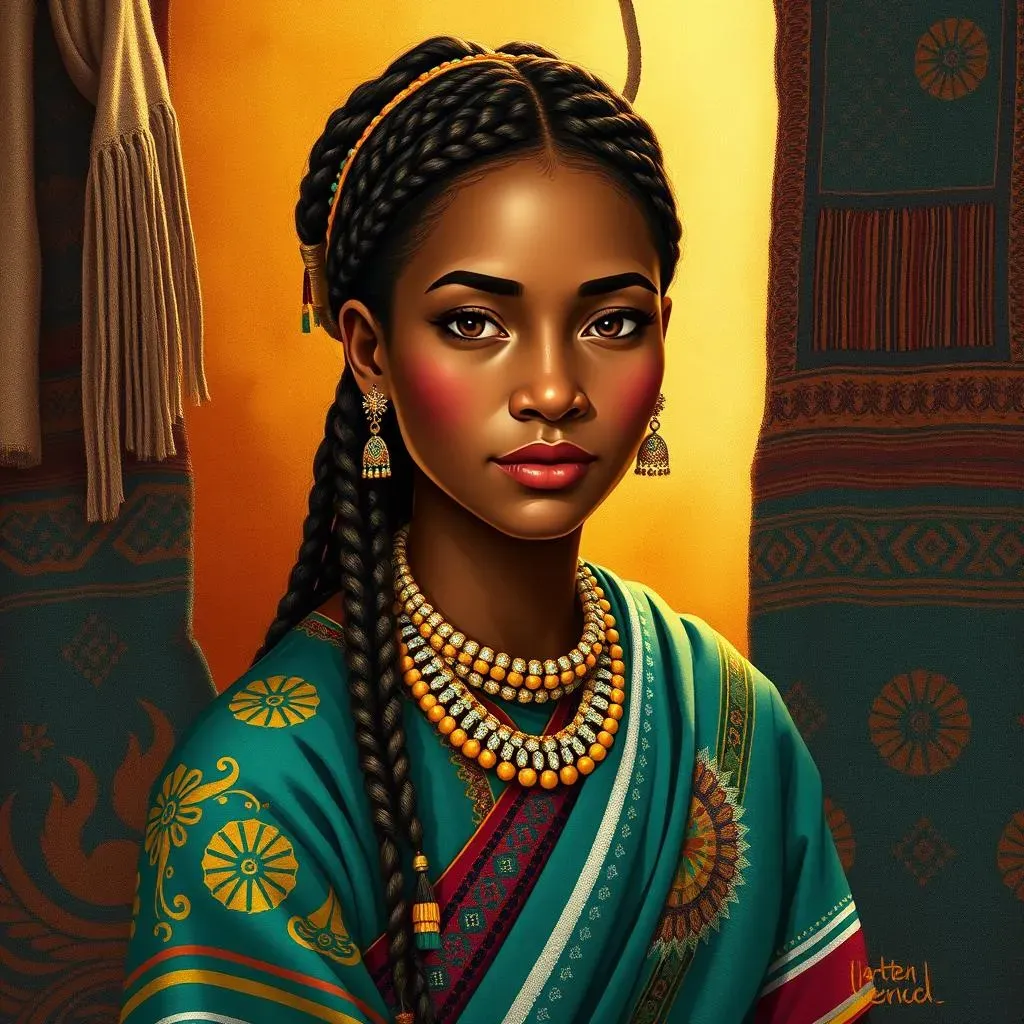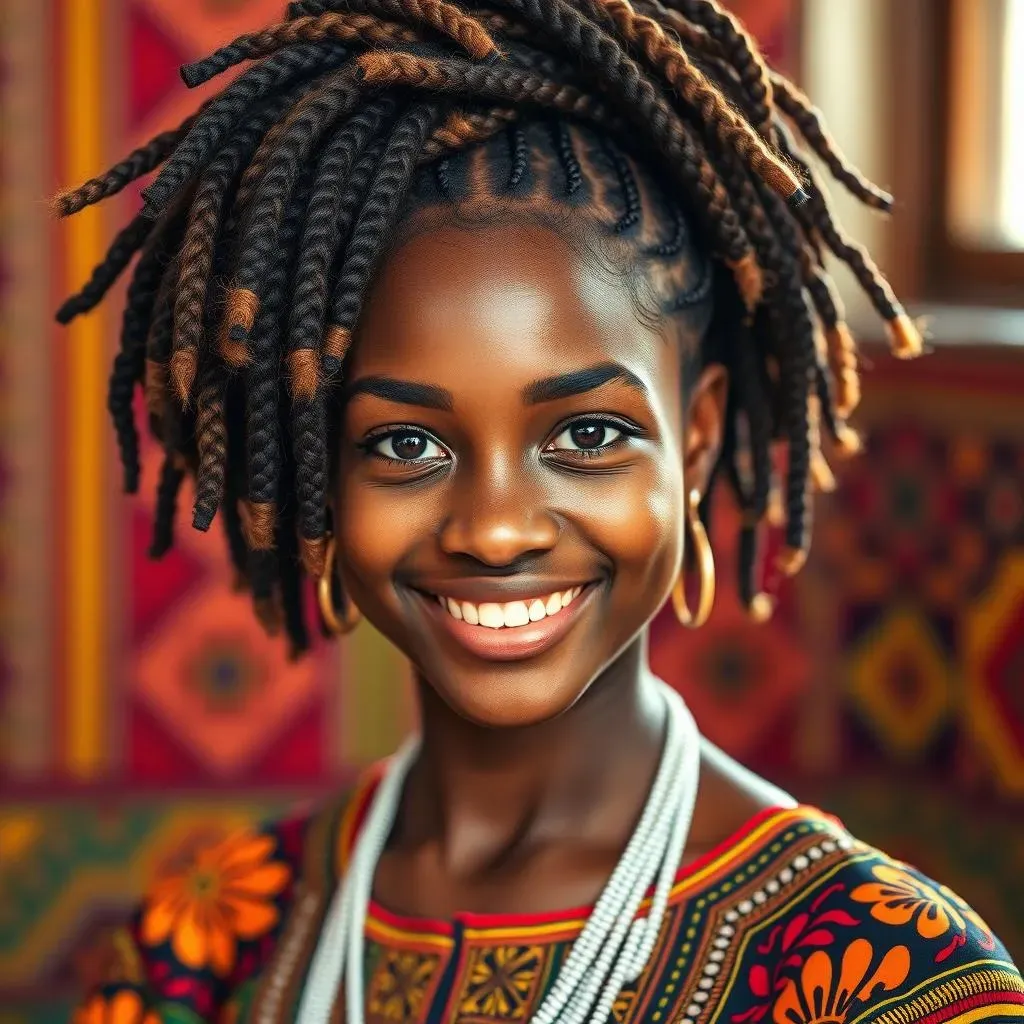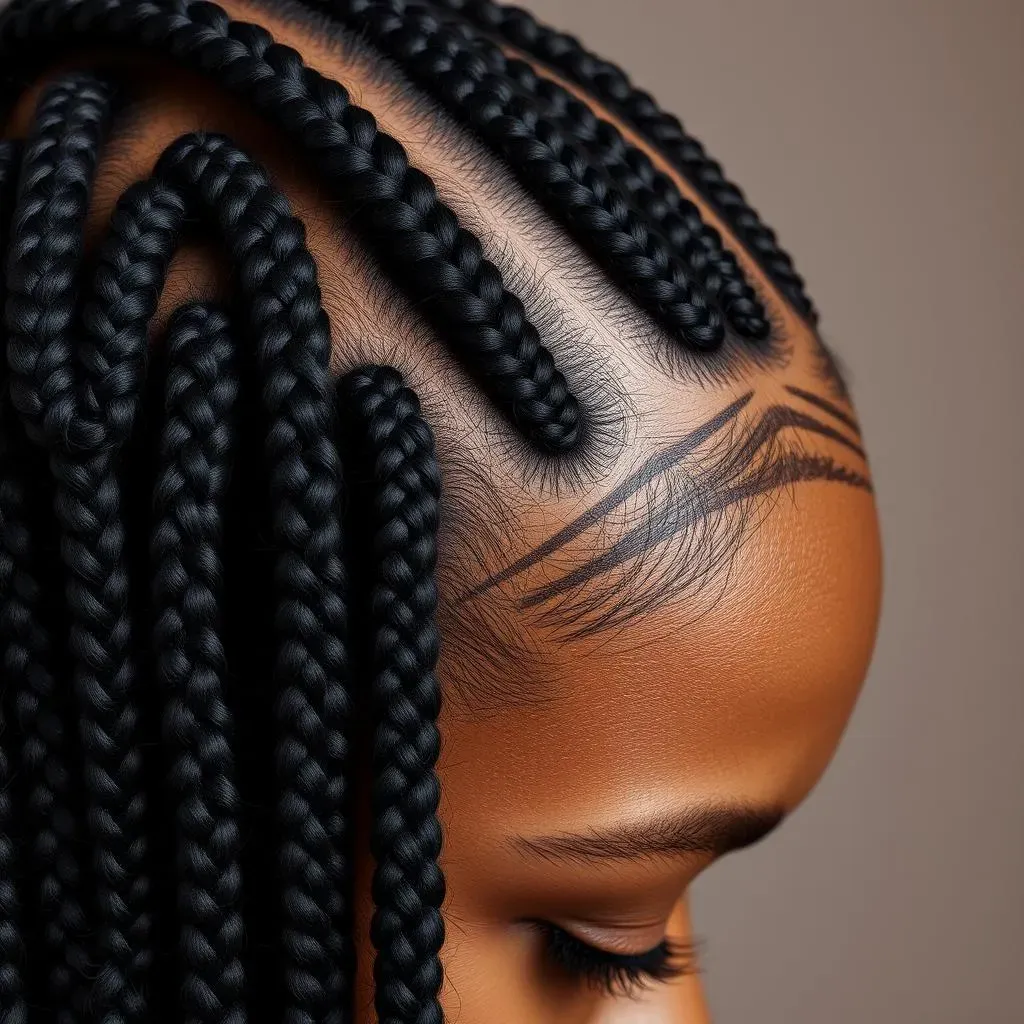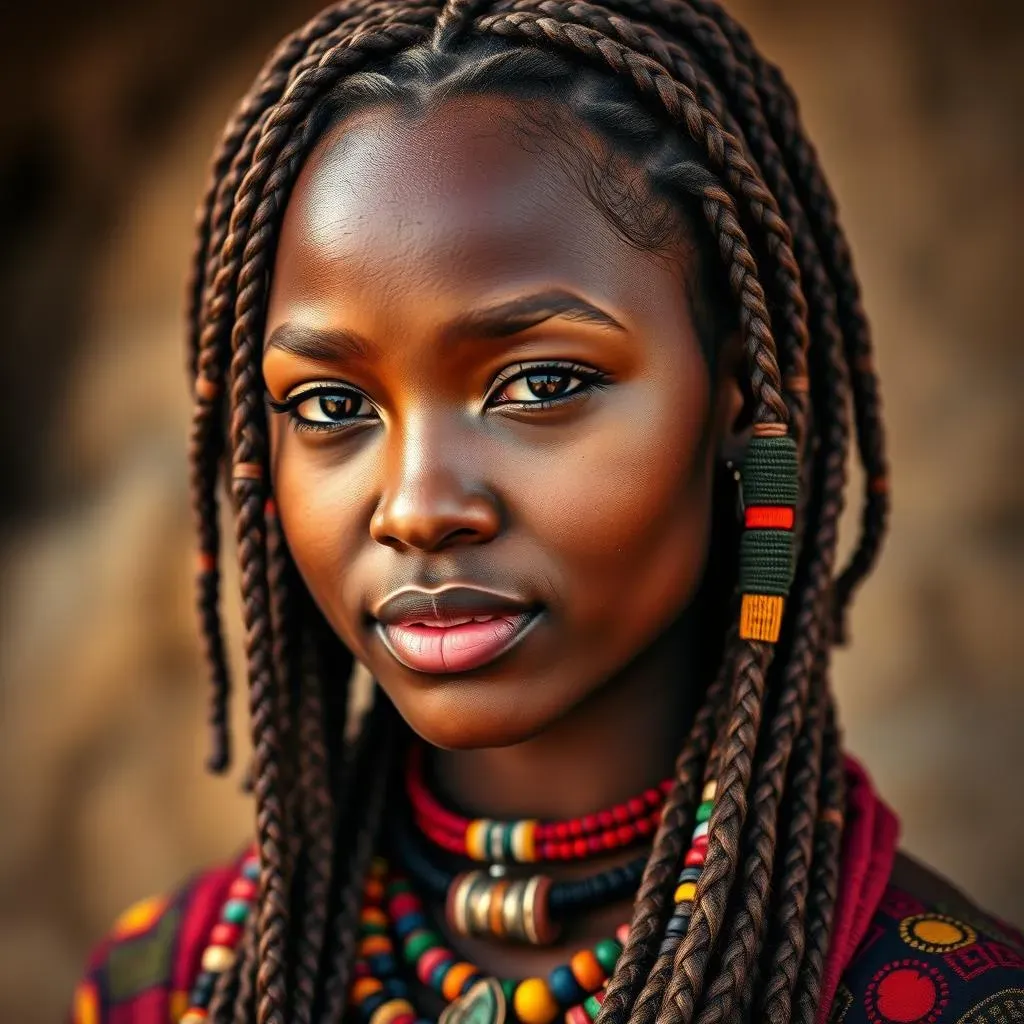Table of Contents
Ever wondered about the amazing artistry of Ethiopian hairstyle braids? These aren't just simple plaits; they're a vibrant expression of culture, history, and personal style. In this article, we're going on a journey to discover the beauty and significance of these incredible braids. We will explore the rich history behind them, from ancient traditions to modern interpretations. You'll learn about the different types of Ethiopian hairstyle braids, like the intricate Habesha braids and the unique Albaso styles, each with its own story to tell. I'll also share some practical tips on how you can achieve these looks and how to keep them looking their best. Whether you're curious about your heritage or simply looking for a new and exciting hairstyle, this is your go-to guide. Get ready to be inspired and maybe even try out some of these stunning Ethiopian braids yourself!
The Rich History of Ethiopian Braids
The Rich History of Ethiopian Braids
Ancient Roots
Let's talk about the real OG's of braiding. I'm not talking about your average three-strand plait; I'm talking about the ancient roots of Ethiopian braids. These styles aren't some new trend; they've been around for centuries! Think about it: long before fancy hair products and YouTube tutorials, Ethiopian women were crafting intricate braid patterns. These weren't just for looks either; they were a big deal, showing off your status, your age, and even what community you belonged to. It's like a secret language woven right into the hair. These braids weren't just a hairstyle; they were a way to express identity and culture.
Imagine the skill involved! Using natural tools and techniques passed down through generations, women created patterns that are still breathtaking today. These early braids weren't just about beauty; they were practical too. They kept hair neat, protected it from the harsh sun, and showed off the creativity of the individual and the community. It's amazing how something so simple can carry so much meaning. It's a testament to the ingenuity and artistic spirit of Ethiopian culture that these styles have endured and continue to inspire.
Era | Significance of Braids |
|---|---|
Ancient Times | Indicated social status, age, and community affiliation. |
Later Periods | Continued to signify cultural identity and personal expression. |
Braids as Cultural Storytellers
Now, let's get into the storytelling aspect. Ethiopian braids aren't just pretty; they're like history books written on a person's head. Different regions had their own unique styles, each carrying its own set of stories and traditions. For example, the Albaso braids are a classic style, and they're more than just a cool pattern—they represent the rich heritage of the Habesha people. It's like each braid is a line in a poem, telling tales of ancestors, celebrations, and everyday life.
It's mind-blowing to think about how these hairstyles have been passed down, mother to daughter, for so long. These braiding traditions are a living connection to the past, a way of keeping cultural memory alive. When you see someone rocking these braids, it's like they're carrying a piece of history with them. It’s not just about looking good; it’s about honoring a legacy. These braids are a powerful symbol of cultural pride and resilience, and that's something truly special.
- Albaso braids: Represent Habesha heritage.
- Other regional styles: Each tell unique stories and traditions.
- Braiding traditions: Passed down through generations, keeping cultural memory alive.
Exploring Different Ethiopian Hairstyle Braids
Exploring Different Ethiopian Hairstyle Braids
The Variety of Braids
Okay, so now that we've touched on the history, let's get into the fun part: the sheer variety of Ethiopian hairstyle braids! Seriously, it's not just one style; it's a whole universe of different looks and techniques. You've got everything from the super intricate, almost architectural designs to more simple and elegant patterns. Think of it like a painter’s palette, where each braid style is a different color, creating a stunning masterpiece. There’s the classic Albaso, which is like the elegant base note, and then you have all these other amazing styles that add their own unique flavor. You'll see twists, cornrows, and even braids that are combined with other hair techniques. It's like a playground for creativity!
I'm always amazed by how much innovation there is within these traditional styles. It's not like people are just sticking to the same old thing. There's a constant evolution, with new patterns and designs popping up all the time. It's a testament to the creativity and ingenuity of Ethiopian women. It's like they're always finding new ways to express themselves through their hair. One day, you might see a sleek, geometric design, and the next, a more flowing and organic style. It’s a living art form, constantly changing and adapting. This variety keeps things exciting and shows just how much depth there is to Ethiopian braiding.
Braid Style | Description |
|---|---|
Albaso | Classic, intricate braids often worn by Habesha women. |
Cornrows | Scalp braids in various patterns and designs. |
Twists | Braids that incorporate a twisting technique for texture. |
Regional Styles and Their Uniqueness
It’s also really cool how different regions in Ethiopia have their own unique takes on braiding. It's like each area has its own signature style, and you can almost tell where someone is from just by looking at their braids. For instance, you might find that some regions favor tighter, more geometric patterns, while others are all about flowing, organic shapes. These regional differences are what make Ethiopian braids so incredibly diverse. It's like a map of the country written in hair, showing the different cultures and traditions that make Ethiopia so special.
These variations aren't just about aesthetics; they’re also about the materials and techniques that are used in different areas. Some might incorporate threads or beads into their braids, while others use natural oils and herbs to keep the hair healthy and strong. It’s like each region has its own secret recipe for creating these amazing styles. It’s a real testament to the fact that beauty is not a single thing but a collection of diverse and unique expressions. This rich tapestry of styles shows just how much creativity and innovation there is within Ethiopian culture. It's an endless source of inspiration!
- Regional variations: Styles differ across Ethiopia, reflecting local cultures.
- Materials and techniques: Each region uses unique methods and materials.
- Cultural expression: Braids are a powerful way to showcase regional identity.
How to Achieve Stunning Ethiopian Braids
How to Achieve Stunning Ethiopian Braids
Getting Started: Tools and Prep
Alright, so you're ready to try your hand at Ethiopian braids? Awesome! First things first, let’s talk about what you'll need. It's not like you need a ton of fancy equipment, but having the right tools will make your life way easier. You’ll want a good quality comb for parting and sectioning your hair – a rat-tail comb is a lifesaver. Then, you'll need some clips to keep the sections you’re not working on out of the way. And of course, you’ll need some good hair ties or small rubber bands. Depending on the style you’re going for, you might also want some hair extensions or thread. It’s like prepping for a painting; you need your brushes, canvas, and paints ready to go.
Now, let's talk prep. Before you even think about picking up a comb, your hair needs to be clean and detangled. Trust me, trying to braid tangled hair is a nightmare, and it'll just make the process longer and more frustrating. So, wash your hair with a good shampoo and conditioner, then gently detangle it with a wide-tooth comb. Once your hair is dry (or slightly damp, depending on your preference), you can add some moisturizing products to keep it soft and manageable. Think of it like building a house; you need a solid foundation to start with. Proper prep is key for achieving those stunning, neat braids. Also, don't forget to have a mirror handy so you can see what you’re doing!
Tool | Purpose |
|---|---|
Rat-tail comb | For precise parting and sectioning. |
Hair clips | To keep unbraided sections out of the way. |
Hair ties/rubber bands | To secure the ends of braids. |
Hair extensions/thread (optional) | To add length or enhance the style. |
Step-by-Step Braiding Techniques
Okay, so you’ve got your tools and your hair is prepped, now for the main event: the braiding itself! The specific technique will depend on the style you're going for, but there are some basic principles that apply to most Ethiopian braids. For cornrows, you’ll start by sectioning off a small piece of hair and then divide that into three smaller strands. Then, you’ll begin braiding, adding more hair to the outer strands as you go. It’s like building a tiny road on your scalp! For styles like Albaso braids, you might start with a small braid and then gradually add more strands, creating a beautiful and intricate pattern. It's kind of like learning to knit; you start with the basic stitch and then build from there. Don't worry if it feels tricky at first; like anything, it takes practice.
The key is to keep your tension even. This means not braiding too tightly or too loosely; you want a nice, consistent tension throughout the braid. If you braid too tight, it can put a lot of stress on your scalp and lead to breakage, and too loose will just look messy. Also, try to keep your parts as neat and straight as possible; this will make your braids look more polished. And don’t be afraid to look up some tutorials! There are tons of videos online that can show you the different braiding techniques. It's totally okay to start with a simpler style and then work your way up to more complex patterns. Just remember to take your time, be patient, and enjoy the process. It’s a journey, not a race!
- Cornrow technique: Section, divide, braid, and add hair.
- Albaso technique: Start with a small braid, gradually add strands.
- Tension control: Maintain even tension to avoid breakage.
- Neat parts: Straight parts for a polished look.
Caring for Your Ethiopian Hairstyle Braids
Caring for Your Ethiopian Hairstyle Braids
Maintaining Moisture and Scalp Health
Okay, so you've got your gorgeous Ethiopian braids in, now what? It's not a "set it and forget it" situation, you know? You gotta keep those braids looking fresh and your scalp happy. Think of it like watering a plant; your hair and scalp need moisture to thrive. A dry scalp is a flaky, itchy scalp, and that's no good for anyone. So, make sure you're using a light oil or moisturizer regularly. I’m talking about things like coconut oil, jojoba oil, or a good quality hair moisturizer. Just gently massage it into your scalp and along your braids a few times a week. It'll keep everything hydrated and prevent that annoying dryness. It’s all about keeping that balance, like making sure your skin stays moisturized after a shower.
Also, don’t forget about your scalp health. Sometimes, buildup can occur, even with braids. If you feel like your scalp is getting a bit itchy, you can use a diluted witch hazel or tea tree oil to cleanse it gently. Just soak a cotton ball and dab it along your scalp. This will help get rid of any gunk without disrupting your braids too much. It’s like a mini spa treatment for your scalp! And remember, try to avoid using heavy products that can weigh your braids down or cause buildup. Keeping things light and clean is the key to long-lasting, healthy braids. Think of it as preventative care; a little bit of effort goes a long way in keeping those braids looking great.
Care Tip | Product/Method | Frequency |
|---|---|---|
Moisturize Scalp | Coconut oil, jojoba oil, light moisturizer | 2-3 times a week |
Cleanse Scalp | Diluted witch hazel or tea tree oil | As needed |
Protecting Your Braids While You Sleep
Alright, let's talk about nighttime protection. You wouldn't leave your precious jewelry out in the open, would you? Well, your braids deserve the same kind of care! Sleeping on regular cotton pillowcases can cause friction, which leads to frizz, breakage, and your braids just not lasting as long. So, you gotta invest in a silk or satin scarf or bonnet. It's like wrapping your hair in a cozy little blanket. These materials are super smooth, which means they'll glide over your hair instead of tugging on it. It's a simple change that makes a huge difference, like switching to a better pair of running shoes for your jogs. You'll be amazed at how much longer your braids last and how much better they look in the morning.
Also, try to avoid sleeping in a way that puts too much pressure on your braids. If you tend to toss and turn a lot, try gently tying your braids up loosely or gather them into a loose bun on top of your head. This will help prevent them from getting tangled or flattened. It's like making sure your sleeping position doesn't squish your favorite pair of glasses. Remember, your braids are an investment of time and effort, so a little bit of extra care at night will help you get the most out of them. It’s all about consistency; making these small changes part of your routine will keep those braids looking fabulous for weeks to come. It's like a small nightly ritual for beautiful hair.
- Silk/satin scarf or bonnet: Reduces friction and prevents frizz.
- Loose bun: Protects braids during sleep.
- Avoid pressure: Prevent tangles and flattened braids.
